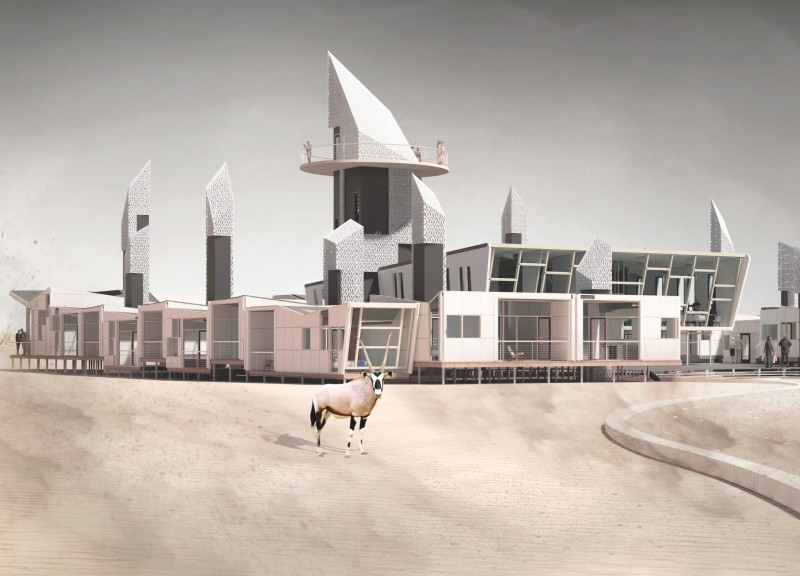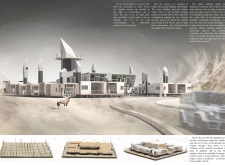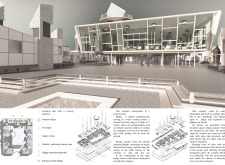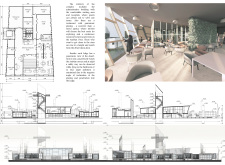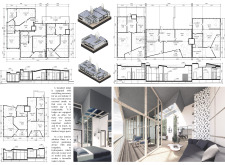5 key facts about this project
The architectural design is set in a wide desert landscape, focused on both habitat preservation and visitor experience. The project consists of a series of lodging units grouped around a central building that features a traditional badgir. The design aims to blend efficiently with the desert, emphasizing resilience and sustainable practices. Its layout and organization provide a balance between community spaces and private areas, fostering an environment for observation of Arabian oryx.
Design and Structure
The buildings are raised on high piles, allowing sand to flow naturally beneath them. This approach avoids shifting sand impacting the structures and contributes to a lightweight visual presence. The residential lodges are arranged forming a protective circle around the administrative center, promoting a sense of safety and community while allowing for individual retreats.
Materials and Insulation
The lodges are constructed from square panels that are glass-coated and filled with fine sand. This combination enhances insulation and helps regulate temperatures inside. The choice of materials reflects an intention to harmonize with the surrounding environment while providing necessary comfort.
Natural Ventilation and Energy Efficiency
A key feature of the design is the badgir, which serves as a passive cooling system. It directs airflow for natural ventilation by allowing hot air to rise through pipes and drawing in cooler ground air. This method reduces reliance on energy, showcasing an efficient use of natural resources. Additionally, techniques are employed to convert thermal energy into electricity, further enhancing energy efficiency.
Interior and Experience
Each lodge is designed to provide expansive views of the desert, encouraging guests to engage with the surrounding landscape. The standard units have recessed terraces that offer shaded outdoor space, while the larger VIP lodges provide office areas for those needing to remain connected. Vertical gardens with drip irrigation systems improve indoor air quality, merging sustainability with comfort. Communal facilities, such as a restaurant and travel agency, contribute to an enriching experience, allowing visitors to explore the desert more thoroughly.
The design carefully balances built and natural elements. Each detail is crafted to create an environment that invites reflection and connection with the desert, offering a unique space for both relaxation and observation.


